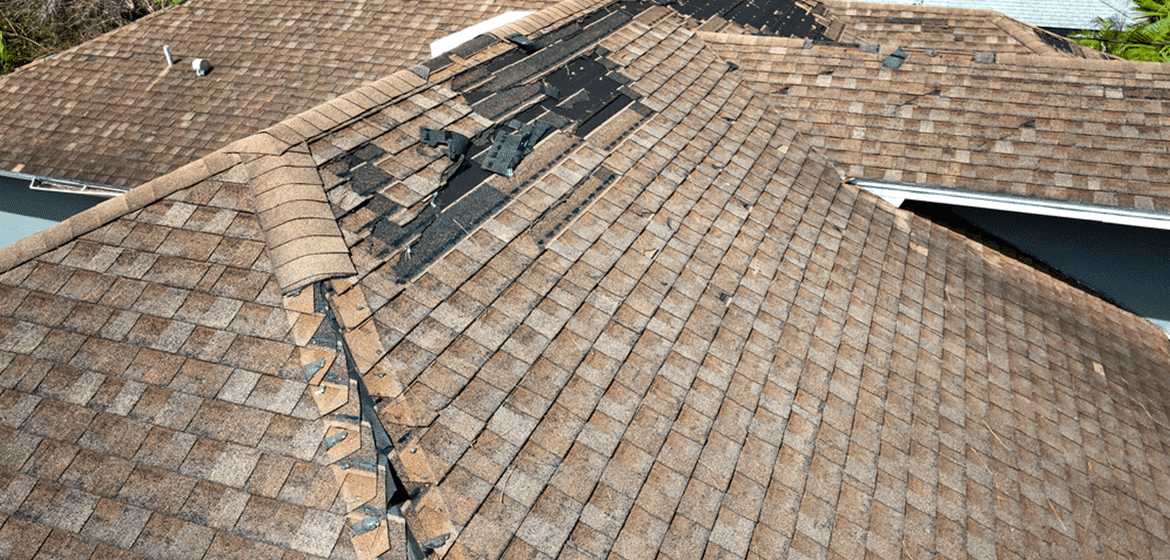
Homeowners often face various challenges, but few are as daunting as addressing storm damage to their roofs. Understanding the common types of roof storm damage can empower you to take swift and effective action, potentially saving you significant repair costs and extending the life of your roof.
In this blog post, we’ll explore the five most prevalent forms of damage that storms can inflict on roofing systems.
Hail Damage
Hail can be one of the most destructive weather elements to your roof, especially if it’s composed of asphalt shingles. When hail hits, it can remove and fracture the granules that protect the asphalt from sunlight and weather degradation.
This damage may not cause immediate leaks but can significantly shorten your roof’s lifespan by exposing it to the elements. After a hailstorm, it’s crucial to inspect your roof for any signs of pitting or dents, which are clear indicators of hail impact.
Wind Damage
High winds can lift shingles’ edges or even rip them off completely, exposing the underlayment and roof deck to further damage. This type of damage is most common on the windward side of the roof but can affect any area with loose or weakened shingles.
The aftermath of a windstorm might leave behind a trail of debris and torn shingles, which are often the first visible signs that repairs are necessary. It is essential to assess and secure lifted shingles before subsequent weather events exacerbate the damage.
Water Damage
Storms often bring prolonged rain, which can find its way through any vulnerabilities in your roof, leading to leaks and water damage.
Common problems include blocked gutters and downspouts which prevent proper drainage, as well as damaged flashing around chimneys and vent pipes, which can allow water to seep in. Keeping your gutters clean and ensuring all roof penetrations are well-sealed can help mitigate this risk.
Impact Damage
Falling trees, flying debris, and other airborne hazards can cause severe impact damage during a storm. Such impacts can puncture your roofing material or even crush the underlying roof structure, leading to immediate and significant water intrusion.
It’s advisable to trim tree branches that hang over your roof and secure loose objects around your property before a storm to minimize the risk of impact damage.
Structural Damage
In extreme cases, particularly with severe weather events like tornadoes or hurricanes, the entire roof structure may be compromised.
This could include broken rafters or trusses, which jeopardize the structural integrity of the roof and the safety of those inside the home. Such damage often requires an immediate professional assessment to determine the necessary repairs or replacements.
Recognizing the signs of storm damage early can be crucial in managing the integrity and longevity of your roof. Regular inspections and maintenance, especially after significant weather events, can help identify and mitigate these types of roof storm damage before they escalate into more serious problems.
Dealing with roof damage promptly not only secures your home against the elements but also maintains its overall value.
If you suspect your roof has suffered from storm damage or requires expert assessment, don’t hesitate to contact us at Dane Roofing. Our experienced team is ready to provide comprehensive roof repair services to ensure your home remains safe and secure.
Call us today to schedule a thorough inspection and get the peace of mind you deserve.

